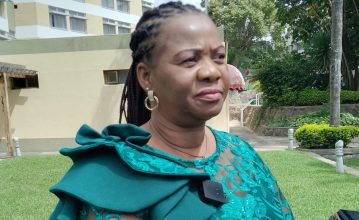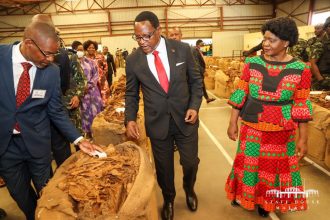Malawi tobacco average prices down 13%
National weighted average price for tobacco in the first 10 weeks of trading is 13 percent lower than the same period last year, confirming a general outcry by most tobacco growers over lower-than-expected prices gripping the 2014 tobacco marketing season.
A weekly tobacco market update by the Tobacco Control Commission (TCC) seen by Business News on Monday shows that during the first 10 weeks, the average price fetching both burley, flue-cured and dark-fired tobacco $1.61 down from an average price of $1.85 during the same period last year.

A further break-down shows that prices for burley tobacco-grown by a majority of smallholder farmers-is 11 percent lower than during the 10 weeks to $1.58 per kg from $1.78 last year.
Flue-cured and dark-fired average tobacco prices are down by 18 percent and 10 percent to $2.22 per kg and $2.05 per kg, respectively.
Tobacco Association of Malawi (Tama) chief executive officer Graham Kunimba on Monday did not hide his disappointment over lower average prices this year and urged buyers to close the gap between this year’s national prices and that of last year.
Said Kunimba: “It is good that average prices are picking up though slightly, but there is still the gap between the average prices this year and last year. But we are not happy in terms of average prices this year and we could have loved if prices were at par.”
According to Kunimba, Tama’s analysis shows that the gap between this year’s weekly average prices and those of the same period last year have been persistent by about 20 cents which he said is quite big.
Another grower Khomani Nyando from Madisi in Dowa on Monday also expressed displeasure over low prices that his tobacco was bought this year which he said is far much below his expectation.
On one hand, the TCC figures also shows that the market conduct is making strides on both earnings and volume as they are both higher than what was earned last year.
The country has earned $117 million against $111 million which represents a 5 percent increase over last year.
On volume, the market has traded 72 million kilograms, which is 20 percent higher above the 60 million kilogrammes sold last year.






A lower price paid for tobacco isn’t entirely attributable to local buyers – malawi only exports tobacco, so the price that our exporters receive is determined by external demand. If you think about it financially, if the market volume increased by 20% and the earnings only increased by 5%, then it would make sense that margins are also lower for buyers. This could mean that because of their large operating costs and decreasing margins, they may have no choice but to negotiate more aggressively on paying a lower price simply in order to break even.
It is also not like the costs faced by buyers have been standing still – the rising cost of fuel and the industry’s dependence on it is enough of a cost increase alone to consider with gravity!
One idea is instead of trying to dictate buyer prices, something could be done to help make the buyer’s operating costs lower in the long run. This could allow buyer profit margins to grow, which in turn leaves them with more to deal with in regards to prices paid farmers (think about if you had MK500 to spend vs MK100 – you would be less willing to pay MK50 for matches if you only had the MK100).
Lowering operating costs of buyers could simply mean improving tobacco-centric infrastructure such as better electricity supply, better road conditions, worker transport (which is currently done by buyer companies).